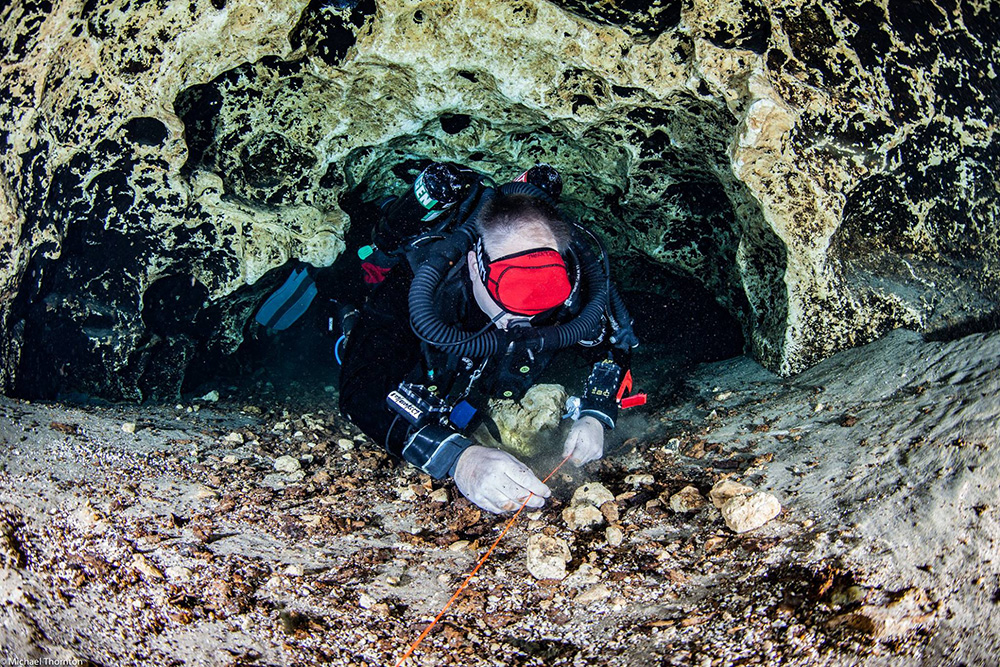Intro to Cave
Are you ready to pick up where you left off in the TDI Cavern Diver Course? Are you looking to expand upon the skills developed in your previous overhead environment training? Sign up for the TDI Intro to Cave Diver Course!
This course is an introduction to the basic principles of cave diving utilizing a single primary guide line. Introductory cave diving is the second level in the development of proper techniques for cave diving, directly building upon the cavern diver course. This introduction to cave diving is not intended to train divers for all facets of cave diving. The objective of this course is the perfection of skills taught in the cavern diving program, in addition to the adoption of additional techniques and procedures required for elementary cave dives.

What you can expect to learn
The TDI Intro to Cave Diver Course takes an in-depth look at all of the following and more:
- Policy for cave diving
- Gas management procedures and management to include dissimilar volumes
- Psychological considerations of cave diving
- Equipment considerations including:
- Cylinder options
- Regulator options
- Buoyancy compensator/harness options
- Proper weighting
- Reel options
- Equipment configurations
- Communication (light and hand signals)
- Swimming techniques
- Body posture/trim
- Buoyancy control
- Line following
- Propulsion (finning) techniques
- Physiology
- Breathing techniques
- Stress management
- Cave environment
- Cave conservation
- Problem solving
- Emergency procedures
- Equipment failure
- Silting conditions
- Accident analysis
- Cave diving etiquette
- Review of dive tables and decompression theory
Course Equipment Requirements
The following are required for this course:
- TDI Diving in Overhead Environments Manual (or TDI Overhead eLearning course)
- TDI Diving in Overhead Environments Instructor Guide
Other suggested reading materials:
- Basic Cave Diving – A Blueprint for Survival
- Cavern Measureless to Man
The following equipment is required for each student:
- Primary cylinder(s); volume appropriate for planned dive and student gas consumption
- Dual-orifice (Y) or (H) valve, double cylinders or dual valve manifold
- Two independent first and second stage regulators; one regulator equipped with a long hose at a recommended minimum length of 2 metres / 7 feet
- Submersible pressure gauge
- Buoyancy compensator device (BCD) with power inflator
- Exposure suit adequate for diving environment
- Mask and fins
- Line cutting device
- Three battery powered lights; 1 primary and 2 back-ups, each with a with burn time suitable for the planned dive time
Course Prerequisites
- Minimum age 18, 15 with parental consent
- Provide proof of TDI Cavern Diver certification or equivalent
Want to know more?
Ask more questions or schedule any of these courses Email Us.
